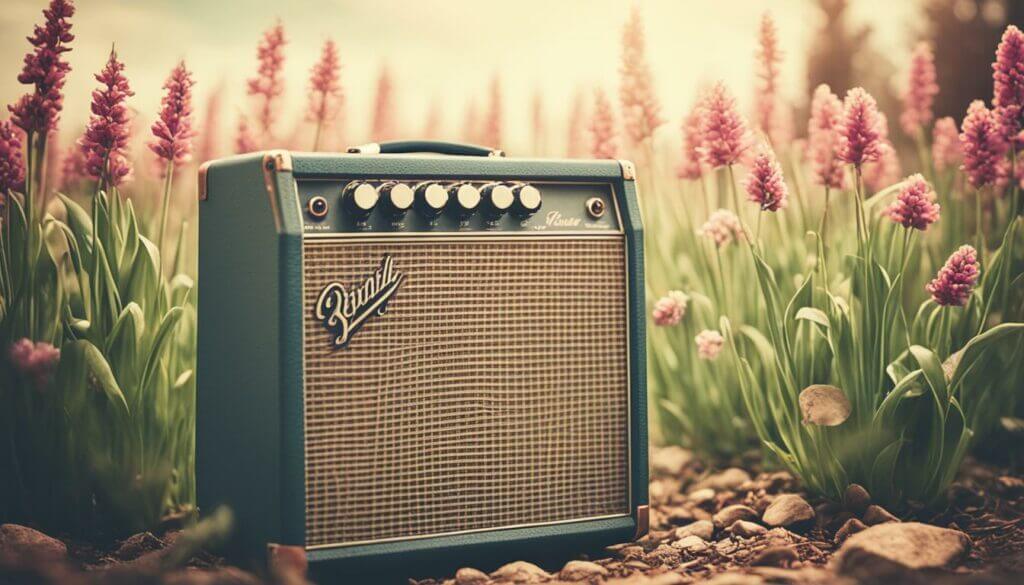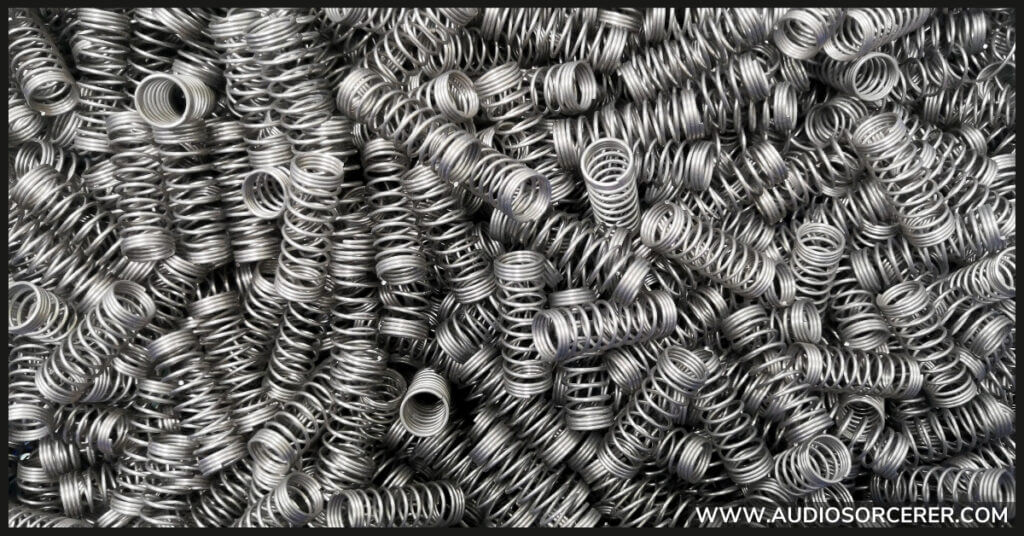
Have you ever listened to a classic track and found yourself enveloped in a lush atmosphere that transports you to another era? The magic behind this vintage sound often lies in an effect called spring reverb, which has shaped the sound of countless records. In this post, we'll guide you through the bouncy, echoic sound of spring reverb that has become synonymous with '60s and '70s tunes. Understanding what is spring reverb and its role in music production unlocks the secrets to achieving that rich, retro sound even in modern recordings.

Delving into the mechanics of classic recordings, you'll often encounter the term spring reverb. This vintage effect, which uses actual springs to create ambient sound, is a standout feature in the history of music production. Its distinctive sound, often associated with the warmth and nostalgia of yesteryear's music, continues to influence modern artists.
But what is spring reverb, exactly? It's a form of artificial reverb wherein audio signals are sent through springs. The kinetic energy travels through the coils, is reflected back, and is then picked up by transducers at the other end. This process yields a series of echo-like repetitions or 'reverberations' of the original sound. The result? A reverberation rich with character, that bouncy texture that's become integral to creating an 'old-school' vibe.
Let's further unpack its essence with a comparative look at the types of spring reverb available and how they are utilized in various musical applications.
Spring reverb has a rich history that dates back to the early days of recording. This technology, known for its distinctive twang and depth, played a pivotal role in shaping the sound of various music genres, from rock and roll to surf music. Here, we delve into the evolution of spring reverb, highlighting its invention, its golden era, and its lasting impact on music production.
Spring reverb was invented in the late 1930s by Laurens Hammond, the same inventor of the Hammond organ. However, it was not patented until 1949, primarily because Hammond initially saw it as a feature to enhance the sound of his organs. The first commercial use of spring reverb was in the Hammond Organ models to add depth and richness to the sound.
The 1960s and 1970s are often considered the golden era of spring reverb, as it became a staple in recording studios and live performances. Guitar amplifiers, notably those produced by Fender, began incorporating built-in spring reverb units, providing musicians with easy access to the effect. The Fender Reverb Unit, introduced in 1961, became particularly iconic, revered for its lush, atmospheric sound that became synonymous with the surf music of the era.
During this time, spring reverb was also extensively used in the production of popular music. Producers and engineers leveraged its unique sound to add depth and space to recordings, enhancing vocal tracks, instruments, and even entire mixes. Its distinctive sound can be heard in countless classic tracks, contributing to the sonic identity of the period.
Related Article: The Top 5 Best Reverb Plugins for Creating Space in Your Mixes

This portion of the article will guide you through the nuances of spring reverb, how it stacks up against digital alternatives, and mastering reverb settings to achieve that polished sound.
Choosing between spring and digital reverb rests on your aesthetic goals:
| Spring Reverb | Digital Reverb |
|---|---|
| Perfect for vintage, lo-fi or surf rock vibes | Ideal for modern, polished, and clean sounds |
| Characterized by its distinctive twang and warmth | Offers extensive programmability for precise tailoring |
| Lends a raw and visceral touch to the mix | Can emulate multiple types of reverb in one unit |
Understanding the environment where your recorded piece would naturally live will inform the choice of reverb. For authentic recreation of past eras, spring reverb does the trick. If precision and versatility are key, digital reverb will be the tool of choice.
Once you've chosen the type of reverb, mastering its settings is pivotal for a nuanced and professional mix:
Spring reverb is distinct due to its mechanical nature, relying on physical springs to create the reverberation effect. This contrasts with other types like plate reverb, which uses a large metal plate, and digital reverb, which simulates reverberation through algorithms. The result is a unique sound characterized by a warm, resonant quality that's particularly effective for adding a vintage or "retro" vibe to recordings.
Yes, spring reverb can be used across various music genres to add depth, space, and character to the sound. While it's famously associated with surf rock and vintage rock 'n' roll due to its prominent use in the 1960s and 1970s, it can also enhance modern pop, electronic, jazz, and even classical music recordings, offering a timeless effect that transcends genre boundaries.
Digital effects can replicate the sound of spring reverb quite convincingly, thanks to advanced algorithms and modeling techniques. Many plugins and digital processors offer spring reverb emulations that capture the essence of the original hardware units. While purists might argue that digital can't fully replicate the nuances of a mechanical spring, many musicians and producers find digital emulations more than satisfactory for practical use.
Many classic tracks from the 1960s and 1970s feature spring reverb prominently. Albums by The Beach Boys, Dick Dale, and The Ventures showcase spring reverb's signature sound in surf rock. Additionally, artists like Jimi Hendrix and Pink Floyd used it to create atmospheric effects in their music. Listening to these recordings can provide insight into how spring reverb contributes to a song's overall texture and mood.
Natural reverb occurs in physical spaces when sound waves reflect off surfaces and blend together, as found in concert halls or rooms. Artificial reverb is electronically created to simulate the effect of those natural reflections through various methods, like echo chambers, digital processing, or devices such as spring reverbs.
The lasting impact of spring reverb on music production is a testament to its distinctive qualities. With its unique ability to add depth, resonance, and vintage sound to recordings, it's an effect that shouldn't be overlooked. It is clear that spring reverb is not merely an echo from the past, but a vibrant, living component of music creation—one that will continue to shape the sound of tomorrow's classics.
If you found this guide helpful, please consider subscribing to our blog for more music production tips, product reviews, and buying guides. Also, you can support new content by contributing to our tip jar.
"Some of the links within this article are affiliate links. These links are from various companies such as Amazon. This means if you click on any of these links and purchase the item or service, I will receive an affiliate commission. This is at no cost to you and the money gets invested back into Audio Sorcerer LLC."